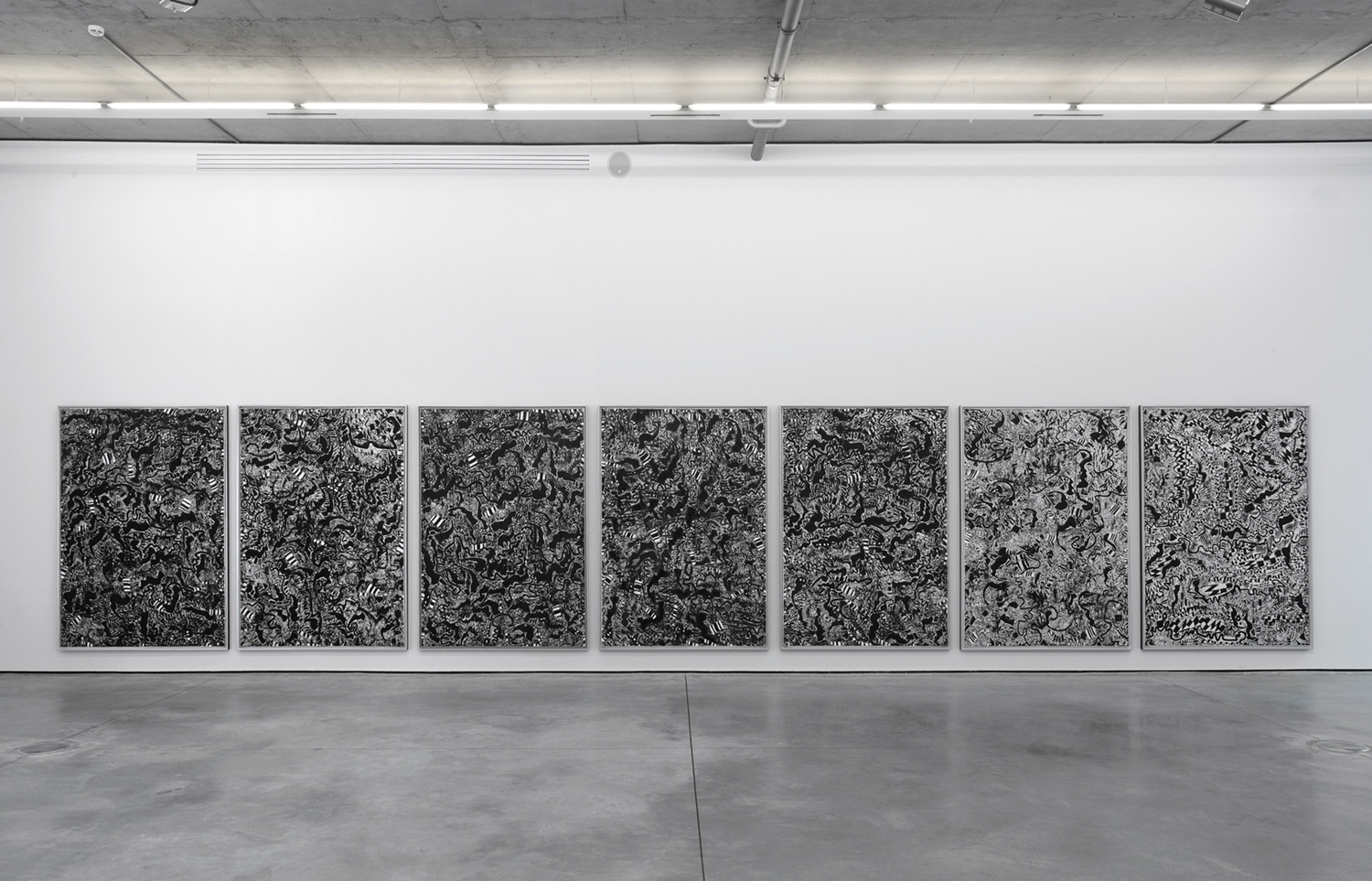Content Oriented Web
Make great presentations, longreads, and landing pages, as well as photo stories, blogs, lookbooks, and all other kinds of content oriented projects.
Content Oriented Web
Make great presentations, longreads, and landing pages, as well as photo stories, blogs, lookbooks, and all other kinds of content oriented projects.
EVGENY CHUBAROV
(1934–2012)
EVGENY CHUBAROV
(1934–2012)
Evgeny Chubarov was born on 11 December 1934 in the village of Lower Bobino, Mechetlinskiy district of Bashkiria (USSR). Artist's passion for drawing and painting appeared in his childhood, under the influence of his father. Willing to learn art science, in 1951 Chubarov moved to Zlatoust city to study jewelry design and weapons engraving at Metal Engraving vocational school.
In 1959 Evgeny Chubarov moved to Saratov, and then to Zagorsk (Sergiev Posad) where he worked in the restoration studio of sculptor Dmitry Tsaplin. This practice influenced Chubarov's early work and aroused his interest to depicting animal figures, as well as a tendency to simplify forms and generalize shapes of the objects. In 1963 artist's paintings the "March" and the "Factory Landscape" first appeared at the exhibition of young artists in Moscow.
In 1959 Evgeny Chubarov moved to Saratov, and then to Zagorsk (Sergiev Posad) where he worked in the restoration studio of sculptor Dmitry Tsaplin. This practice influenced Chubarov's early work and aroused his interest to depicting animal figures, as well as a tendency to simplify forms and generalize shapes of the objects. In 1963 artist's paintings the "March" and the "Factory Landscape" first appeared at the exhibition of young artists in Moscow.
Evgeny Chubarov was born on 11 December 1934 in the village of Lower Bobino, Mechetlinskiy district of Bashkiria (USSR). Artist's passion for drawing and painting appeared in his childhood, under the influence of his father. Willing to learn art science, in 1951 Chubarov moved to Zlatoust city to study jewelry design and weapons engraving at Metal Engraving vocational school.
In 1959 Evgeny Chubarov moved to Saratov, and then to Zagorsk (Sergiev Posad) where he worked in the restoration studio of sculptor Dmitry Tsaplin. This practice influenced Chubarov's early work and aroused his interest to depicting animal figures, as well as a tendency to simplify forms and generalize shapes of the objects. In 1963 artist's paintings the "March" and the "Factory Landscape" first appeared at the exhibition of young artists in Moscow.
In 1959 Evgeny Chubarov moved to Saratov, and then to Zagorsk (Sergiev Posad) where he worked in the restoration studio of sculptor Dmitry Tsaplin. This practice influenced Chubarov's early work and aroused his interest to depicting animal figures, as well as a tendency to simplify forms and generalize shapes of the objects. In 1963 artist's paintings the "March" and the "Factory Landscape" first appeared at the exhibition of young artists in Moscow.
In 1970-80's Chubarov worked on a series of powerful ink compositions on paper. His figurative works gradually transformed to more complex multi-figure compositions discovering a new interpretation and relationship between painting and the body. Compositionally, his work inherited the techniques of the Christ Carrying the Cross by Bosch (1515–1516), the expressionism of Boris Grigoriev in his Faces of Russia (1920–30s) and Pavel Filonov's analytical experiments.
“
We were guests to a living genius.
In 1986 Chubarov was admitted to the Artist's Union of USSR. The Soviet part of Chubarov's biography is not rich in external events: for several decades, Chubarov had been working on a series of stone sculptures, drawings and paintings. Not searching for the independent exhibitions, he was familiar with many key figures in nonconformist and official culture, but never associated himself with a popular Underground movement.
In 1970-80's Chubarov worked on a series of powerful ink compositions on paper. His figurative works gradually transformed to more complex multi-figure compositions discovering a new interpretation and relationship between painting and the body. Compositionally, his work inherited the techniques of the Christ Carrying the Cross by Bosch (1515–1516), the expressionism of Boris Grigoriev in his Faces of Russia (1920–30s) and Pavel Filonov's analytical experiments.
“
We were guests to a living genius.
In 1986 Chubarov was admitted to the Artist's Union of USSR. The Soviet part of Chubarov's biography is not rich in external events: for several decades, Chubarov had been working on a series of stone sculptures, drawings and paintings. Not searching for the independent exhibitions, he was familiar with many key figures in nonconformist and official culture, but never associated himself with a popular Underground movement.
In early 1990s, at the invitation of Gary Tatintsian, he moved to Berlin and then to New York city, where his style underwent its last transformation. Chubarov headed from impressionism to pure abstraction and succeeded. He was awarded a Pollock-Krasner Foundation grant and participated in exhibitions on equal footing with the leading artists of the post-war generation: Frank Stella, Peter Halley, Sol LeWitt and Damien Hirst.
Chubarov came to abstraction at the moment when it stopped being a political gesture of emancipation from the formal requirements of art. Such a late step beyond the narrative art emphasizes his internal independence from the artistic context he worked in. Chubarov managed to concentrate on the painstaking creation of non-figurative painting primarily as a thing, an object in different dimensions, from the ornamental to the psychological.
Evgeny Chubarov died in 2012 at the age of 78. Artist's heritage includes over hundreds of paintings, thousands of works on paper and sculptures that can be found in Public Funds, Museums and private collections around the world.
Chubarov came to abstraction at the moment when it stopped being a political gesture of emancipation from the formal requirements of art. Such a late step beyond the narrative art emphasizes his internal independence from the artistic context he worked in. Chubarov managed to concentrate on the painstaking creation of non-figurative painting primarily as a thing, an object in different dimensions, from the ornamental to the psychological.
Evgeny Chubarov died in 2012 at the age of 78. Artist's heritage includes over hundreds of paintings, thousands of works on paper and sculptures that can be found in Public Funds, Museums and private collections around the world.
In early 1990s, at the invitation of Gary Tatintsian, he moved to Berlin and then to New York city, where his style underwent its last transformation. Chubarov headed from impressionism to pure abstraction and succeeded. He was awarded a Pollock-Krasner Foundation grant and participated in exhibitions on equal footing with the leading artists of the post-war generation: Frank Stella, Peter Halley, Sol LeWitt and Damien Hirst.
Chubarov came to abstraction at the moment when it stopped being a political gesture of emancipation from the formal requirements of art. Such a late step beyond the narrative art emphasizes his internal independence from the artistic context he worked in. Chubarov managed to concentrate on the painstaking creation of non-figurative painting primarily as a thing, an object in different dimensions, from the ornamental to the psychological.
Evgeny Chubarov died in 2012 at the age of 78. Artist's heritage includes over hundreds of paintings, thousands of works on paper and sculptures that can be found in Public Funds, Museums and private collections around the world.
Chubarov came to abstraction at the moment when it stopped being a political gesture of emancipation from the formal requirements of art. Such a late step beyond the narrative art emphasizes his internal independence from the artistic context he worked in. Chubarov managed to concentrate on the painstaking creation of non-figurative painting primarily as a thing, an object in different dimensions, from the ornamental to the psychological.
Evgeny Chubarov died in 2012 at the age of 78. Artist's heritage includes over hundreds of paintings, thousands of works on paper and sculptures that can be found in Public Funds, Museums and private collections around the world.





